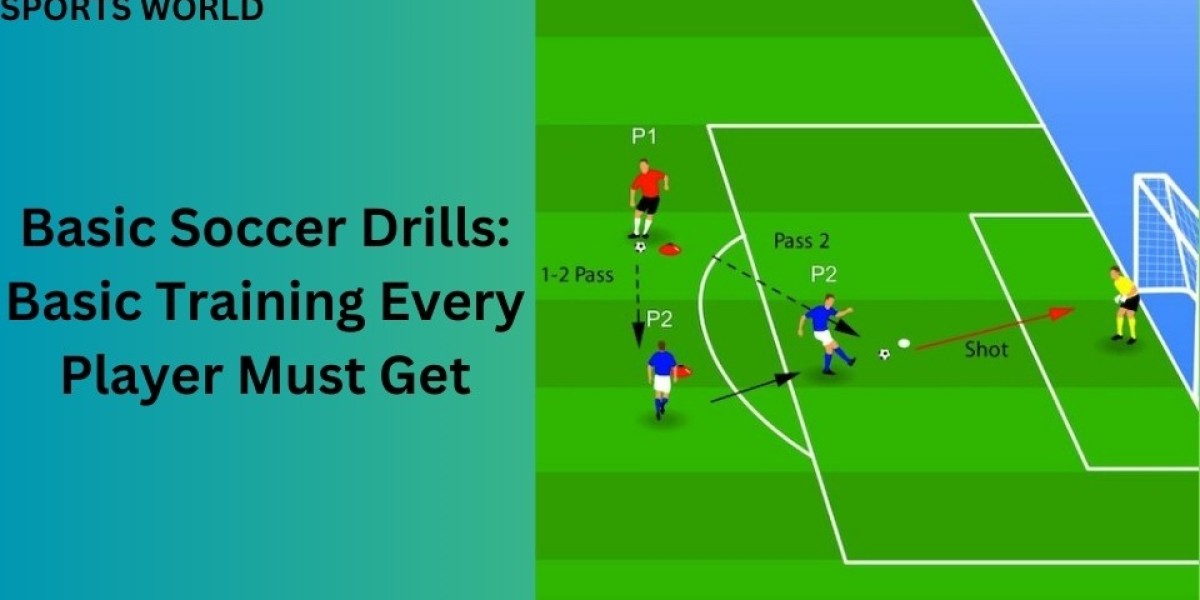Soccer or as some countries refer to it football is a game that entails physical and mental abilities, football entails both intelligence in the skills applied and stamina to proceed with the play. For these abilities to be seasoned, players at these levels need to continue using soccer drills as a way of practice. These drills can be practiced by any soccer player, no matter their current skill level – they can help the amateur player become a better player, and also assist the more advanced player whose soccer skills need some touching up or sanding off. In this article, there will be crucial soccer drills to be elaborated which include the ball control, the passing, dribbling, shooting and defence.
1. Why Soccer Drills Is Important

Soccer drills are further used in terms of teaching the player’s special techniques and physical attributes that are required in the field. Drills enables one to train specially in areas of the game to be catered including control, passing, and agility. By consistently performing drills, players can:
- Enhance skill involving passing and trapping of the ball.
- Improve their ball distribution in passing and shooting.
- Augment their capacity to assess the game and to make fast choices.
- Build endurance and stamina.
Alright now its time to check out some fundamental soccer drills that players will want to include in their practice routines.
2. Dribbling Drills
Any soccer enthusiasts will know that dribbling is a basic soccer move that gives any player the chance to move the ball forward while soaring across the field. Dribbling is the controlled movement of the ball that is near the body either on the ground or in the air.
A. CONE DRIBBLING DRILL
This exercise helps enhance a player’s close ball control and his or her ability to perform quick turns during a dribble. Here’s how it’s done:
Establish 5-10 cones on the field in line, evenly separated by the distance of 2-3 feet.
The player starts by moving the ball around the cones performing quick touches while maintaining proximity with it.
When they get to the last cone, they can then immediately race back to the start or just walk around the cones in the backward.
This drill involves different activities which assist in ball control with intensity while at the same time being fast and balanced.
B. 1V1 DRIBBLING DRILL
As in any typical drill, there is setting of the players in a way that they have to take on defenders. Here’s how it works:
Form groups that are made up of two students only. To play this game, one must be the attacker, and the other must be the defenders.
The attacker tries to take the ball around the defender with an intention to score, say a small goal or a line.
The functions of a defender are to block the attacker or pinch the ball from him, and not to make a foul.
The utility of this drill is to organized player’s skills during one-on-one confrontation and enhance the ability to make the right choices in critical situations.
3. Passing Drills
This is a very important concept in soccer since it facilitates the movements of the ball on the soccer field so as to open up spaces in which the team can play in. Every passing assignment is created for increasing the accuracy, timing, and adjustment among the players.
A. WALL PASSING DRILL
This simple yet effective drill improves passing accuracy and touch:
Players then position themselves about 2-3 feet of a wall and knock the ball with the interior surface of their feet.
They control the ball after every pass and batter the ball as it returns and pass the ball back to his wall.
Players can also change the exercise by changing distance from the wall, increasing the rate of the ball passing or changing the surface of the feet on the ball. This drill will assist players to master the first touch and the accuracy when receiving and passing a ball.
B. TWO-TOUCH PASSING DRILL
This drill emphasizes passing and receiving the ball quickly:
Divide players into two teams and they will stand in pairs and they will be 5 ten yards from each other.
They Dribble with one another to over and cannot touch the ball more than once without passing it back.
This drill helps the players to apply themselves to make right touch and get rid of the wastage of time in passing the ball. When players get better the distance between them can be raised and players can be urged to use their weak foot.
4. Shooting Drills
Dribbling is the most crucial soccer skills every soccer player, and more so the forward need to have to shoot well and with a lot of force. Shooting drills assist the players to master the best ways of shooting and enhance their striking skills around the Forbidden Zone.
A. TARGET SHOOTING DRILL
This drill focuses on improving accuracy when shooting at specific areas of the goal:
Install goals at the corner area of the goal (the goals may be cones, mini-nets or colored squares).
Players go through one by one shooting the targets at different positions and different distances.
Inherent in this exercise is the ability to learn precision through aiming at different parts of the goal besides general match conditions.
B. SHOOTING ON THE RUN DRILL
This drill mimics in-game shooting situations where players need to shoot while moving:
Lay down cones on the ground in sequence that will take the kids close to the goal line.
This entails having the players to perform dribbling where by at the last cone shoot at the goal while still in motion.
Specifically, this particular drill allows the players to work under pressure and at speed, hence will help the players to improve their composure when forming a shot during the actual game.
5. Defensive Drills
defense is also crucial in soccer; therefore, players require to develop special drills that help them with defense, such as tackling and marking. To increase the tactical skills where the player learns when to expect his opponent’s next move and how to gain control of the ball, there are defensive drills.
A. SHADOW DEFENDING DRILL
This drill focuses on positioning and tracking an attacker:
There needs to be one player to attack and the other to defend though if the real attack comes knocking then the result is as follows.
Cross for example requires an attacker to take the ball in a box while the defender traces the movements of the attacker without attempting to challenge the ball.
In this drill, great emphasis is attached to the defenders’ ability to stay in good position and prevent the attacker from moving forward. They end up helping defenders to wait and control their feet properly in the process.
B. 2V2 DEFENDING DRILL
This drill introduces teamwork and communication into defending:
Create a simple field where one of the goals is miniature.
Two persons try to penetrate, throw or shoot and get past the two persons from the other team that may be guarding to regain the ball.
This drill is used to teach the defenders on teamwork, communication and ensuring they have each other’s back. It also a way of making improvements in tackling and actually reading the game.
6. List of Drills: Ball Control and First Touch

An important aspect includes use of proper feet, dribbling, and first touch which enables a team to gain dominant possession or give creation of scoring opportunity. Some of these drills build these skills.
A. JUGGLING DRILL
Juggling helps players improve their touch and coordination:
Players perform with nicety how they can control the ball using only feet, knees, and head without leaving the ball touch the ground.
The following skills were suited by juggling: balance, feet-ball coordination as well as control of the ball.
B. FIRST TOUCH DRILL
This drill emphasizes controlling the ball quickly and effectively:
One of a team’s coach or a teammate plays the ball to a player on the team, who has to initially touch the ball with a certain part of his or her body, then return the ball back the way it came or take it forward.
It is aimed towards making the first touch to create a second one, which becomes especially important in game scenarios.
Conclusion
Fundamental soccer exercises are universally utilized as the platform for creating crucial competencies that every soccer player should master. Drillsvwhich include dribbling, passing, shooting, defending and ball control reveal players the way that they have to practice in order to gain confidence in the respective sectors of the game. Through practicing these drills regularly in their training sessions, individuals improve and when they start applying them, they benefit that much more to the team, as well as enjoying the game even more.






